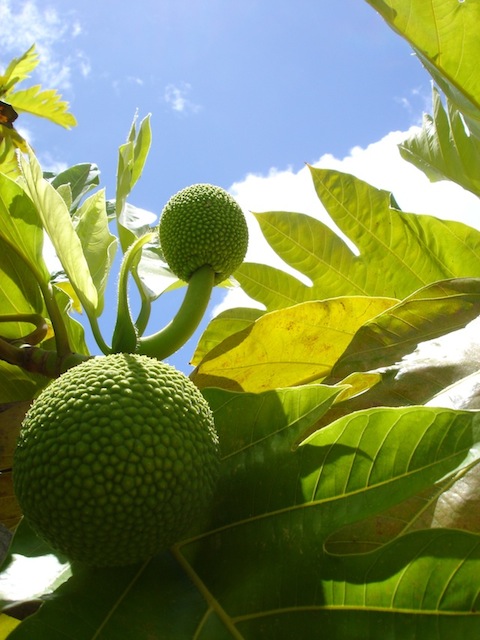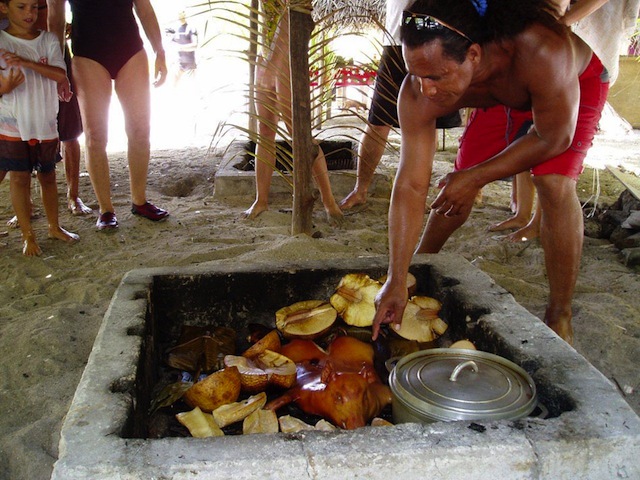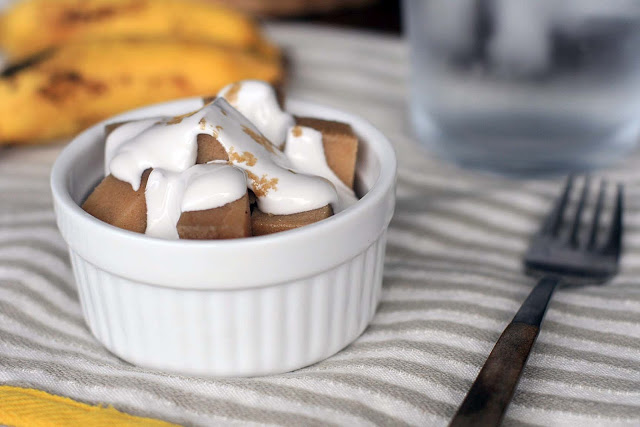
“What’s the traditional food of Polynesia like?” I ask Aiata, my taxi driver in Tahiti.
She smiles. “Everything we need comes from five specific trees. We mix the fruits from these trees with meat or fish for a complete meal.”
According to Aiata, locals try to have five specific trees in their yards: breadfruit, banana, coconut, lime and a choice between papaya or mango (or sometimes both). Fun fact: According to Aiata, lime doesn’t just add flavor to a meal, it also makes for a great deodorant.
“Sounds like a healthy diet,” I respond, thinking about how many natural fruits these people must eat.
She laughs. “The dishes are actually quite fattening. Breadfruit is very starchy, and we usually use an oil-based coconut milk as the sauce.”
Apparently, the roots of the Polynesian diet come from a time when locals were hunters, gatherers and fishers, and could easily burn off their consumed calories through their activities.
“Today the most exercise people around here get is when they get up to get their remote,” laughs Aiata. “Exercise hasn’t caught on here the way it has in Europe and other countries. The culture here is to just relax.”
Regardless of its caloric content, traditional Polynesian food is quite delicious. My first encounter with it is through a dish called poisson cru, which is often touted as the national dish. Similar to a tuna ceviche, this dish is a typical starter or side dish to a meal and includes fresh raw tuna soaked in salt water and placed in a mixture of sliced onion, ginger, parsley, lime juice and coconut milk. Just as Aiata had explained, the dish takes a protein — in French Polynesia it’s typically a fresh fish — and makes use of the local fruits to make it into a complete meal.

Traditionally, fruits and meats are cooked in an ahima, or underground Earth oven. The process involves pre-heating the oven with wood and placing volcanic rocks on top, which heat the food once the fire goes out. Fish, pork, chicken, breadfruit, taro and other produce are wrapped in coconut leaves and placed on the rock, while banana and purao leaves as well as dirt are placed on top to keep the heat trapped and cook the food fully. Once it’s done, the foods can be dipped in coconut cream sauce and enjoyed with the fingers. This meal is usually served on Sundays, for special occasions or on weekends when locals head to the nearby motus for a barbecue. If you don’t have any friends who are locals that can introduce you to this, certain tours include a traditional Tahitian barbecue on a motu or typical Tahitian feast to give you a sense of the meal.
Another fun way to explore French Polynesia through it’s essential trees is through a snack known as a Polynesian Hot Dog. The simple dish features a banana cut down the middle with coconut slices placed into the opening. While the banana acts as the bun, the coconut is like the meat.
While French Polynesia, especially Tahiti, is a melting pot of cultural influences with everything from Italian to Chinese to Vietnamese food, one common finding throughout the islands is a focus on French dishes made with local ingredients. Don’t be surprised to find pate enhanced with a local mango chutney, carpaccio made with local smoked fish and a creamy lime sauce or shellfish sublimed in a coco curry emulsion. These dishes allow you to appreciate the French influence over the destination as well as local agriculture.

While I’m not a huge fan of sweets, the traditional Polynesian Po’e has me at a loss for words, which I sample during a homecooked meal at one of the pensions I stay at. Po’e is a fruit pudding featuring pureed banana, brown sugar, arrowroot and vanilla and topped with coconut cream. The taste is satisfying and reminiscent of a fruit laden tropical paradise (which it is).
The cuisine of French Polynesia is a trip in itself, engaging all the senses. Touching the colorful fruits and seeing their vibrant colors. Smelling scents of grilled seafood, fried breadfruit and sweet pineapple and hearing it sizzle as it’s being cooked. And of course, tasting local flavor, whether through the traditional Polynesian manner or French cooking with a local twist, which is best enjoyed on a white sand beach with a tropical cocktail enhanced by local fruits and flowers. After savoring a meal in this fashion myself, I can completely appreciate French Polynesia’s relaxed culture, and why they don’t mind gaining some extra weight for the sake of a fresh culinary experience.
Featured image of possion cru via Tahiti.com
Jessica Festa
Latest posts by Jessica Festa (see all)
- A Culturally-Immersive Adventure In Mongolia’s Altai Mountains - Jul 8, 2023
- This Recipe Sharing Platform Supports Women In The Culinary Industry (Labneh Recipe Included!) - Nov 5, 2020
- Hiking The Mohare Danda Community Eco-Trek In Nepal - Jun 3, 2020
- 6 Important Questions For Choosing A Responsible Yoga Retreat - May 18, 2020
- How To Create & Grow A Profitable Blogging Business (Ethically) - Jan 18, 2020





